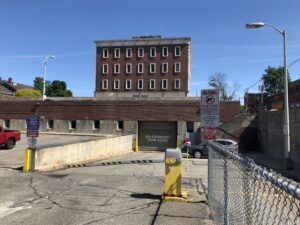“Justice can be an outcome; it can also be an intentional process that leads to an intended outcome”
-AIA Justice in the Built Environment
DESIGN JUSTICE
July 26, 2022
The past several weeks our team has been gathering weekly to talk about how the concept of justice intersects with our work. The basis of our discussion was a recent publication of the American Institute of Architects (AIA), Justice in the Built Environment. The document looks at why justice matters to architects, and how the design of the built environment has both intentionally and unwittingly favored some groups and excluded others throughout our history. It seeks to identify “opportunities, benefits, and challenges of making justice a deliberate aim of the building process.”
Why does justice matter to us? Because building for communities is at the heart of what we do. As building owners, designers, and operators, those that control the built environment have a tremendous impact on those that do not. Although we typically understand that an architect works to serve the needs of the client, we take a much longer look at how our work serves everyone that interacts with the spaces we design. What we build has the ability to delight, or depress; to invite, or exclude; to inspire or to discourage civic engagement.
We also understand our impact on the environment as a justice issue; the choices we have traditionally made in building have had a significantly negative impact on the future. Soil and air pollution, mismanagement of water, and of course the emission of green-house gases are all traditional ways the built environment has negatively impacted people and planet. Consciously working to make decisions that address these past injustices and create a positive impact opens the possibility of a regenerative outcome.
As a profession, it’s important that we recognize the way that our built environment reinforces patterns of injustice. Here in Portsmouth, we have a pretty robust discussion about the negative impact of new development, and anecdotally we hear a lot about the way that new development is “filling up all the open space.” The reality – and the irony – is that most lots that are being built on today are not ‘open’ at all – they’re typically lots where the original urban fabric – housing and shops where people lived and thrived – were torn down forcefully in the name of urban renewal.
 Portsmouth’s McIntyre Federal Building site is a prime example of this effect. Urban renewal created not only a building that is out of scale and inaccessible to people downtown, but demolished the thriving network of streets, shops and houses – a whole neighborhood – that formerly occupied the site. When we think about the ire that redevelopment of this site raises in the community, it may be helpful to think acknowledge these past injustices and think about how an approach that seeks to reweave the prior fabric might be successful. Reconceiving the site this way might support development at a scale accessible to people that live, work, shop, and recreate downtown.
Portsmouth’s McIntyre Federal Building site is a prime example of this effect. Urban renewal created not only a building that is out of scale and inaccessible to people downtown, but demolished the thriving network of streets, shops and houses – a whole neighborhood – that formerly occupied the site. When we think about the ire that redevelopment of this site raises in the community, it may be helpful to think acknowledge these past injustices and think about how an approach that seeks to reweave the prior fabric might be successful. Reconceiving the site this way might support development at a scale accessible to people that live, work, shop, and recreate downtown.
Our reading and discussion has helped us understand the ways that our profession has been complicit in decisions that created injustice in the past and how to act on our potential to do better. Communities will not always agree on what is just, but if more voices are included and points of view considered, the result will likely be beneficial to all.
Resources